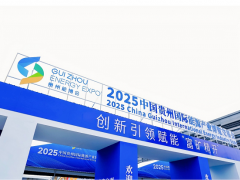美國主要頁巖油生產(chǎn)商希望在今年提高產(chǎn)量,但大幅增產(chǎn)似乎不太可能
無論美國今年的頁巖油產(chǎn)量有多高,都不太可能高到足以對國際原油價格構(gòu)成重大壓力
井產(chǎn)能的提高可能不足以抵消美國頁巖地區(qū)鉆井速度的下降
據(jù)油價網(wǎng)2023年8月10日報道,在最新的財報季中,美國幾家頁巖油巨頭調(diào)整了他們今年的產(chǎn)量預(yù)期。令人驚訝的是,他們都向上修正了這些預(yù)測。
彭博社在最近發(fā)表的一份報告中表示,這一向上修正歸因于更高的油井產(chǎn)量,這讓人感到意外。由于這一意外,今年美國石油產(chǎn)量的增長將強(qiáng)于此前預(yù)期。
如果我們相信路透社調(diào)查的分析師對美國頁巖行業(yè)的看法,根據(jù)這些分析師所說,要想大幅提高美國頁巖油的產(chǎn)量,僅靠井產(chǎn)能趨勢的突然逆轉(zhuǎn)是不夠的。
鉆井產(chǎn)能的“驚人”增長可能出乎媒體意料,但對于行業(yè)來說,這并非完全在意料之外。原因是:那些報告生產(chǎn)率提高的公司表示,他們一直在努力提高他們的鉆井效率,而他們已經(jīng)看到了結(jié)果。
美國著名大型獨(dú)立油氣勘探和生產(chǎn)公司先鋒自然資源公司的首席執(zhí)行官斯科特·謝菲爾德去年曾警告稱,美國的頁巖繁榮已經(jīng)結(jié)束,原因之一是鉆井產(chǎn)能下降。
雪佛龍公司公布了第二季度歷史新高的產(chǎn)量,因?yàn)樗鼘W⒂诙B紀(jì)盆地的得克薩斯州區(qū)域,而不是新墨西哥區(qū)域。雪佛龍公司預(yù)計,今年二疊紀(jì)盆地的產(chǎn)量將增加10%。
然而,路透社調(diào)查的分析師認(rèn)為,以目前的鉆探速度來看,這不足以顯著提高美國的石油總產(chǎn)量,目前的鉆探速度仍然低迷。
7月份,美國油田服務(wù)供應(yīng)商敲響了警鐘。他們表示,頁巖地區(qū)對這些服務(wù)的需求正在下降,美國三大油服巨頭斯倫貝謝公司、哈里伯頓公司和貝克休斯公司都報告了他們北美業(yè)務(wù)的下降。
美國主要水力壓裂公司Liberty Energy的首席執(zhí)行官克里斯·賴特告訴英國《金融時報》記者:“在第二季度,我們看到水力壓裂活動減少,導(dǎo)致我們工作日歷上的空白增加。”賴特還表示,如果需求保持在同一水平,該公司可能需要減少其水力壓裂隊(duì)伍的數(shù)量。
因此,一方面,勘探和生產(chǎn)公司報告了更高的井生產(chǎn)率,而他們的油田服務(wù)提供商則報告了更低的鉆井活動。
與此同時,美國能源信息署(EIA)將其對今年美國石油日總產(chǎn)量的預(yù)測上調(diào)至歷史最高的1280萬桶,高于此前預(yù)測的1260萬桶。據(jù)EIA估計,上周美國的石油日產(chǎn)量已經(jīng)達(dá)到1260萬桶。
由于更低的鉆井成本,美國石油行業(yè)估計每年的石油產(chǎn)量將日增85萬桶。EIA還指出,油價上漲是推動美國石油產(chǎn)量增加的因素之一。
然而,分析人士指出,美國頁巖井的枯竭速度很快,需要更多的鉆井活動來抵消這一自然過程,同時大幅提高產(chǎn)量。但頁巖巨頭并沒有這么做,盡管價格上漲,他們?nèi)詧允刭Y本紀(jì)律。
所有這些都表明,無論美國今年的石油產(chǎn)量有多高,都不太可能高到足以對國際油價構(gòu)成重大壓力,尤其是考慮到美國石油出口歷史新高的速度。
這些出口給油價基準(zhǔn)帶來了下行壓力,但它也有其局限性:歐佩克+的兩大領(lǐng)導(dǎo)國原油出口量仍遠(yuǎn)遠(yuǎn)超過美國,而且兩國都對產(chǎn)量或出口設(shè)定了上限。沙特阿拉伯還警告說,它可能會進(jìn)一步加大減產(chǎn)力度,以保持油價上漲。
這對頁巖鉆探商來說是個好消息。這讓他們有機(jī)會減少支出,增加產(chǎn)量,并通過向海外銷售更高的產(chǎn)量來賺取更多的錢,這要?dú)w功于地緣政治沖突發(fā)生前最大的市場——?dú)W洲——以及世界上最大的石油市場——亞洲——強(qiáng)勁而有彈性的需求。
李峻 譯自 油價網(wǎng)
原文如下:
Oil Majors Eye Higher Shale Output This Year
· Major shale oil producers are looking to ramp up output this year, but a very significant production hike seems unlikely.
· However high U.S. output goes this year, it is not very likely it would go high enough to put significant pressure on international prices.
· An increase in well productivity may not be enough to offset lower drilling rates in the U.S. shale patch.
The latest earnings season saw several shale oil majors revise their output projections for the year. Surprisingly, they revised these projections upward.
The revisions were attributed to higher well productivity that Bloomberg said in a recent report had come as a surprise. Thanks to that surprise, U.S. oil production was set for stronger than previously expected growth this year.
Or maybe not, if we are to believe analysts that Reuters polled on their take on the U.S. shale industry. According to these analysts, it would take more than a surprise reversal in well productivity trends to boost U.S. shale oil production meaningfully.
The “surprise” increase in well productivity may have been unexpected for the media, but it certainly wasn’t totally unexpected for the industry. The reason: those companies that reported such productivity improvements said they’d been working at improving their drilling efficiency. And they’ve seen results.
Pioneer Natural Resources, whose CEO Scott Sheffield last year warned that the shale boom is over, citing, among other things, well productivity.
Chevron reported record output for the second quarter as it focused on the Texas part of the Permian rather than the New Mexico side. The company expects 10% higher production from the Permian this year.
Yet the analysts polled by Reuters argue that this will not be enough to boost total U.S. output significantly, not at the current drilling rates, which remain subdued.
Oilfield services providers sounded the alarm last month. They said demand for these services in the shale patch was on the decline, with all three supermajors in the space—SLB, Halliburton, and Baker Hughes—reporting a decline in business for North America.
“During the second quarter, we saw reduced frack activity that resulted in increased white space in our calendar,” Chris Wright, the chief executive of fracking major Liberty Energy, told the FT. Wright also said the company might need to reduce the number of its fracking fleet going forward if demand remained at the same level.
So, on the one hand, exploration and production companies are reporting higher well productivity rates while their oilfield service providers are reporting lower drilling activity.
Meanwhile, the EIA revised up its projection for this year’s U.S. oil total to a record 12.8 million bpd, up from an earlier forecast of 12.6 million bpd. Per EIA estimates, last week saw production hitting 12.6 million bpd already.
The industry itself appears to estimate the annual boost in production at 850,000 bpd, thanks to these longer laterals and lower drilling costs. The EIA also cites higher oil prices as drivers of higher production.
Yet analysts note the fast depletion rates of shale wells, noting that it would take a lot more active drilling to offset this natural process and boost production considerably at the same time. But shale majors are not doing this. They remain disciplined despite higher prices.
What all that suggests is that however high U.S. output goes this year, it is not very likely it would go high enough to put significant pressure on international prices, not least because of the record rate of U.S. oil exports.
These exports are putting downward pressure on benchmarks but, once again, it has its limits: Saudi Arabia remains a much bigger exporter of crude than the U.S., and so does his partner, and both have put caps on either production or exports. Saudi Arabia has also warned it could go a step further and deepen its production cuts to keep prices higher.
This is good news for shale drillers. It gives them the opportunity to spend less, pump more, and make more money by selling that higher output abroad thanks to robust and resilient demand in the former biggest market before the geopolitical conflicts – Europe – as well as the world’s biggest market for oil, Asia.
免責(zé)聲明:本網(wǎng)轉(zhuǎn)載自其它媒體的文章及圖片,目的在于弘揚(yáng)石化精神,傳遞更多石化信息,宣傳國家石化產(chǎn)業(yè)政策,展示國家石化產(chǎn)業(yè)形象,參與國際石化產(chǎn)業(yè)輿論競爭,提高國際石化產(chǎn)業(yè)話語權(quán),并不代表本網(wǎng)贊同其觀點(diǎn)和對其真實(shí)性負(fù)責(zé),在此我們謹(jǐn)向原作者和原媒體致以崇高敬意。如果您認(rèn)為本站文章及圖片侵犯了您的版權(quán),請與我們聯(lián)系,我們將第一時間刪除。







